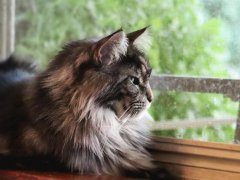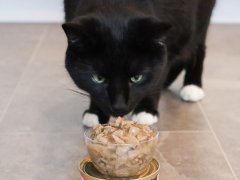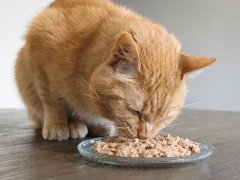
Kirsten McCarthy / Cats.com
Pet food aisles come with far too many options. It’s hard to know what to look for and which ingredients are known to be harmful. One type of ingredient that has gotten a mixed reputation is byproducts in cat food. What are byproducts and are they safe for our cats to eat? It may feel like you have to be a feline nutritionist just to understand cat food labels, but I’ll help demystify the common byproducts used in cat food.
What Are Animal Byproducts?
You may have some preconceived ideas about byproducts—that they contain all sorts of leftover meat, including hooves and teeth, but this isn’t true. Byproducts are defined as “Secondary products produced in addition to the principal product.”
The principal product is often food that is for human consumption, e.g., cuts of muscle meat. Parts of the animal, usually a cow, pig, or sheep, that are left over after this processing, can then be used for animal feed and are hence called byproducts.
According to the Association of American Feed Control Officials (AAFCO), they can contain lungs, spleen, kidneys, brain, liver, blood, bone, fatty tissue, stomach, and intestines.[1]
Definition of Byproducts
Specifically, they say that byproducts are “the non-rendered, clean parts, other than meat, derived from slaughtered mammals. It includes but is not limited to, lungs, spleen, kidneys, brain, livers, blood, bone, partially de-fatted low-temperature fatty tissue, and stomachs and intestines freed of their contents.
It does not include hair, horns, teeth, and hoofs. It shall be suitable for use in animal feed. If it bears a name descriptive of its kind, it must correspond thereto.”[1]
Definition of Poultry Byproducts
There are some differences with poultry byproducts that can contain heads and feet. Poultry byproducts are the “non-rendered, clean parts of carcasses of slaughtered poultry, such as heads, feet, and viscera, free from fecal content and foreign matter except in such trace amounts as might occur unavoidably in good factory practice.”
In short, byproducts are usually organs and bones that are left over after the muscle meat has been removed for human food. It doesn’t include parts such as hooves or teeth.
Are Byproducts Safe for Cats?
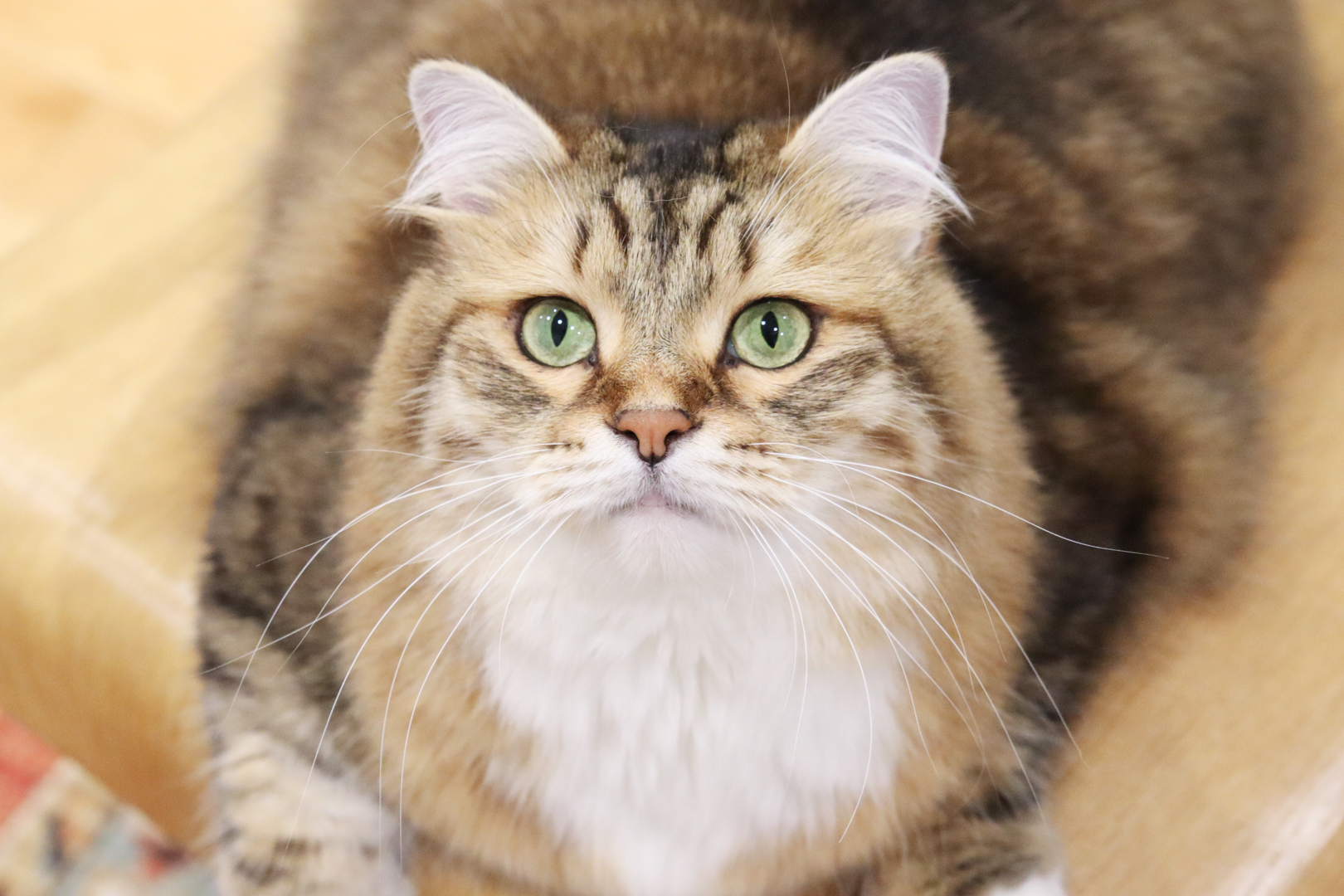
Cats are natural hunters who often eat their prey whole. Kirsten McCarthy / Cats.com
Many people think that byproducts are unsafe or that they indicate low-quality food. This isn’t necessarily true. Cats are obligate carnivores, meaning they must eat meat to survive.[3] Cats that have outdoor access hunt regularly and sometimes even eat their catch. Feral cats and cats in the wild hunt to survive and eat most of their prey, occasionally leaving the head or some intestines. They eat the brain, spleen, liver, kidneys, heart, lungs, bones, etc. This provides them with a nutritious meal full of vitamins and minerals.
Bearing this in mind, if it’s healthy and safe for them to eat the organs of their prey, it makes sense that cats can eat byproducts and that they are safe for them to eat.
Are Byproducts Beneficial for Cats?
Byproducts can provide lots of nutrition. For example, bone provides calcium and phosphorus, which are essential for bone health, energy metabolism, and many other bodily functions. Organs such as the liver contain ample amounts of vitamin A, B12, and iron.
The heart is a good source of taurine, an essential amino acid for cats that they can only obtain from their food. Taurine promotes normal vision, digestion, heart muscle function, and a healthy immune system.[2]
Byproducts can be nutritious for cats, providing high-quality protein, fat, and vitamins. However, even though byproducts can be nutritious, it doesn’t mean that all of them are.
The quality of the byproduct depends on the quality of the animal they were taken from. For example, what was the housing of the animals, were they looked after well, and were they fed well? It can be difficult to know, especially if byproducts have been used from multiple species, e.g., cow and poultry in the same food byproducts.
Byproducts can also be made into meat meal. This is when the byproducts are cooked to reduce bacterial contamination and dried into powder. Although meat meal can be a good source of protein, it’s difficult to ascertain the quality of the individual ingredients.
How to Choose a Healthy Cat Food
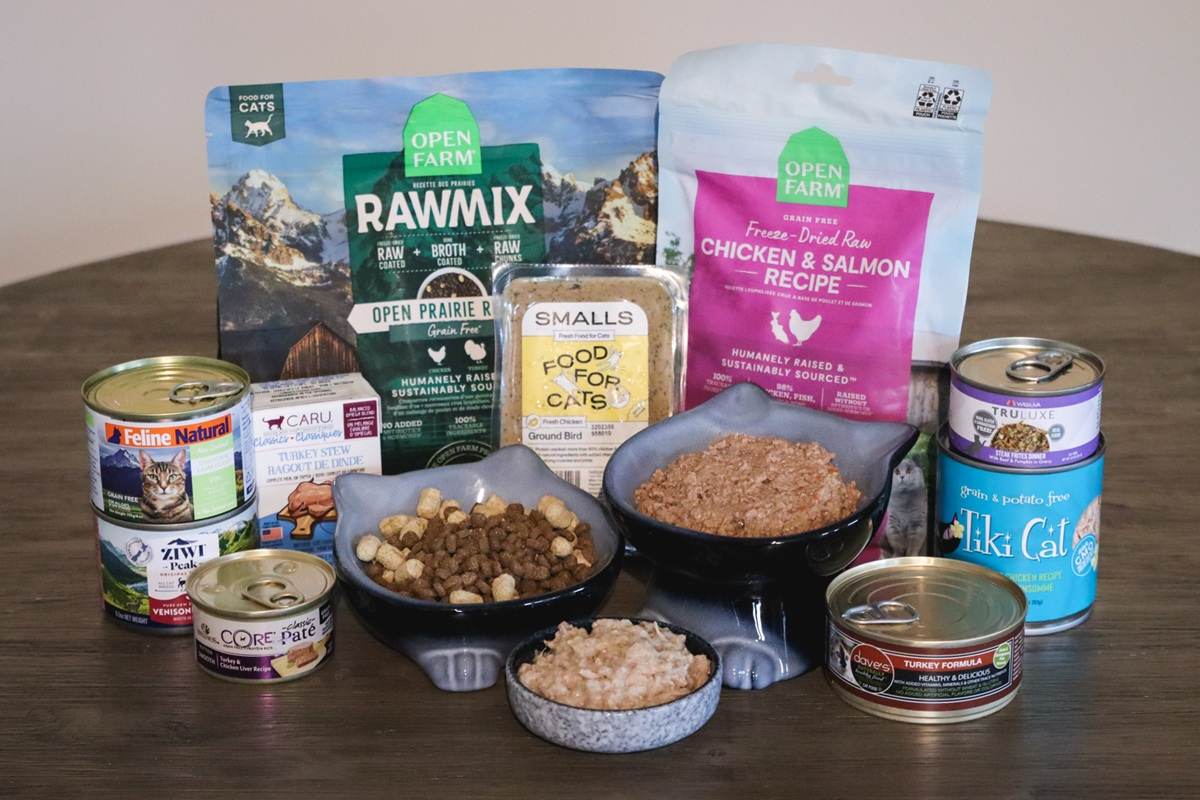
Choosing the right cat food can be difficult because labels are often confusing. Kirsten McCarthy / Cats.com
Choosing great cat food starts with an understanding of your cat’s unique nutritional needs as an obligate carnivore. Veterinarian Dr. Lizzie Youens, BVSc, MRCVS explains,“Our domestic pet cats have not altered their physiology much from their wildcat ancestor.”
In other words, they crave high quality meat.
According to Dr. Youens, cats gain most of their energy from protein, rather than carbohydrates; they use fats to process certain vitamins and nutrients.
Animal byproducts aren’t necessarily a bad thing. They can be a great source of protein, fat, and vitamins for your cat. However, there are a few things to watch out for. For example, some cat foods may clearly state the byproducts they’ve used, the animal they came from, and it what amounts.
Other cat foods may just have ingredients like “meat meal” or “by-product meal.” This doesn’t necessarily mean the food isn’t good, but it’s hard to judge the quality when you don’t know the ingredients[3]. We don’t know if the animal was housed well or fed high-quality food. In this regard, the ingredients may be harder to source and may not be of optimal quality. That’s especially problematic for cats that have food allergies.
Byproducts aren’t inherently bad and they can provide vital nutrients that cats need. However, the byproducts should be clearly labeled and of a high quality. When in doubt, always buy your cat food from a reputable cat food company. Ensure that the diet says it’s complete and balanced and is approved by the AAFCO.
-
What’s in the ingredients list? The Association of American Feed Control Officials. Published January 27, 2023.
-
Malcolm Weir, DVM, MSc, MPH; Ryan Llera, BSc, DVM; Cheryl Yuill, DVM, MSc, CVH. Taurine in Cats. VCA Animal Hospitals.
-
Obligate carnivore | Carnivores. Encyclopedia Britannica.
